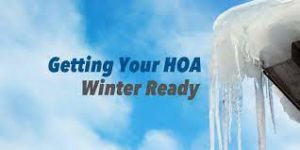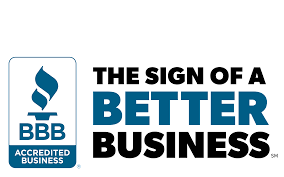Preparing Your HOA Community to Handle Winter Emergencies
February 11, 2024

Winterizing your community is likely something you’ve already discussed and begun the planning stages. Beyond the steps mem Property Management NJ can take for winterization though, you can also be aware and ready for any winter emergencies in your community.
Winter emergencies in an HOA mean that your residents may be in trouble. This may involve icy roads, your public buildings or private homes in the community facing damage or even the risk of injury during harsh winter weather.

Residents may find themselves without heat, water, or electricity when it matters most. Being prepared for winter emergencies means both preventing accidents and having what you need to quickly rescue neighbors from an emergency situation in the cold.
Let’s talk about some of the most practical ways to prepare your HOA for emergencies this winter.
Complete the Neighborhood Winter Maintenance Checklist
- Icy Roads and Sidewalks
- Repair Pavement
- Regular Salting
- Close and Lock Non-Winter Facilities
- Clearly Posted Signs
Plumbing- Insulate pipes
- Empty hoses and sprinklers
- Rooftops
- Inspect and repair
- Insulation
- Weather Stripping
- Windows
- Attic and Basement Drafts
- Appliance Maintenance
- Furnace tune-up
- Duct and vent cleaning
While mem property management nj can’t predict and prevent all accidents, you can prevent quite a few with good maintenance. Just by completing your winter prep checklist for the neighborhood, you can prevent everything from winter leaks to icy slip-and-falls.
From there, help your community to fix up every home before the first freeze. mem property management NJ newsletter checklist of everything to inspect, prep, or repair. The more repairs are completed before winter, the fewer burst pipes and broken furnaces will become winter emergencies in the future.
Plan for Snow Removal
If it snows in your area, have a plan in place for when that happens. You may need snow plows and salting services. Those service providers are – understandably – in high demand on days when they are needed. Private neighborhoods should get in touch with snow removal services and make sure you’re on the route for snow days. You should also know what number to call if you want an extra ice clearing just for neighborhood safety.
For neighborhoods in warm states, it never hurts to have a plan. Most locations see snow at least once every five years.
Know Your Emergency Repair Services
Plumbing, HVAC, and post-storm home repairs are the three most common types of neighborhood winter emergencies. Personal winter emergencies are led with icy slips as the leading cause. If one of your public facilities experiences a winter emergency, have the file ready on who to call and a back-up plan just in case.
Get in contact with your chosen repair services, don’t just write down the numbers on a list. Let them know that you’d like them to be your go-to service if they’ll prioritize calls from your homeowners. You might even get a neighborhood discount by becoming a steady referral source. This not only wins you favored service for local homeowners, it also preps the teams to do the work you’re most likely to need. With partnership, they will learn the neighborhood and how to neatly conform with HOA policies.
If a resident has a winter emergency and needs help from the neighborhood, know who to call. This may be the ideal moment for the HOA to show their value by connecting homeowners with fast, reliable, and policy-compliant repair services. Know who your members should call for emergency repair financing, for inspections and consultations, and every number they might need to call.
Have a Backup Housing Plan in Place
Many winter emergencies render a home temporarily unsafe. Losing heat or electricity, large drafty holes in the house, and burst pipes usually require alternate housing. At least until repairs are complete. Winter emergencies are when the community HOA can show its worth with a prepared alternate housing option so that families in an emergency have one fewer essential thing to worry about.
Check-In After Every Storm
Finally, know how to help residents identify a winter emergency in-progress. The most likely times are during the first freeze, the deepest freeze, and after every serious storm. Storm damage leads to further winter damage like roof leaks from blown-away shingles. After every storm, do the rounds or send out a newsletter asking homeowners if their house is OK. suggest a checklist for quick homeowner inspection after each storm. In your newsletter, you can share the contact info for your chosen neighborhood repair teams.
Is your HOA ready for the winter? Whether your winters are snow-covered or mild, it never hurts to have a little red folder for every possible occasion. Prep your public spaces and homeowners for the winter and be prepared for every usual (and any fathomable unusual) disaster that could occur. Contact us today for more HOA planning and strategies.






